Customer Obsession and Agile Mindset at Riot Games
Last year I got the chance to participate in the SD Learning Consortium (SDLC) as a Spotify representant. I got the chance to visit several very interesting companies who are all on a journey to discover together the world’s most advanced Agile goals, principles and practices and disseminate them globally. I also hosted a visit in our New York office with some really smart and curious people attending through the SD Learning Consortium.
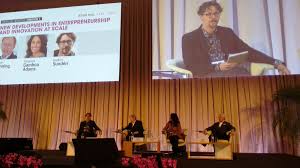 One of the companies that really caught my interested, in part because they are quite similar to Spotify in many ways, was Riot Games. I was so inspired by my visit in their Los Angeles office that I ended up writing an internal report for Spotify, later published (in a modified version) as an appendix in the full 2016 SDLC report. I also presented parts of it at Drucker Forum together with SDLC board members Steve Denning and Vanessa Adams, “New Developments in Entrepreneurship and Innovation at Scale” (full video).
One of the companies that really caught my interested, in part because they are quite similar to Spotify in many ways, was Riot Games. I was so inspired by my visit in their Los Angeles office that I ended up writing an internal report for Spotify, later published (in a modified version) as an appendix in the full 2016 SDLC report. I also presented parts of it at Drucker Forum together with SDLC board members Steve Denning and Vanessa Adams, “New Developments in Entrepreneurship and Innovation at Scale” (full video).
However, I know some people won’t make it through the full report all the way to the 6th appendix, so I wanted to share my report about Customer Obsession and Agile Mindset at Riot Games in this blog too. I hope you enjoy it at least fraction as much as I enjoyed my visit at Riot!
Customer Obsession and Agile Mindset at Riot Games
Riot Games aspires to be the most player focused game company in the world. They currently have one game in production, League of Legends, a team-oriented action and strategy game or MOBA (Multiplayer Online Battle Arena). League of Legends has dominated the online market since at least 2012 and is the biggest online PC game in the world with more than 67 million monthly active users, 27 million per day, and over 7.5 million concurrently during peak hours.
Riot was founded in 2006 and has 2,500 staff with 15 offices all over the world, from their biggest main office in Santa Monica in the West to Tokyo in the East. Riot Games is a popular employer (e.g. #13 on Fortune’s list of 100 “Best Companies To Work For”), they were Agile from the start and have a trusting culture and decentralized way of operating.
The Riot culture
Culture is one of the most important factors why people work at Riot Games. One Rioter explained that Riot culture comes from the experience of being burned by a different culture where managers would say, “You just have to do this”. “Here at Riot, you can’t tell anyone here to do anything. That’s not a joke!” Autonomy and trust seem strong at Riot Games. One example is that they don’t do budgeting, only forecasting exercises. If you need to hire people you just make a business case for that. If you’ve done your homework, and answer all questions, you’re fine, even if you have “used” all your forecast headcount. Another example of this trust and autonomy is how the development manager coordinator we met had produced a video explaining the Development Manager role by internally recruiting people and procuring what she needed without having to seek approval.
Mission and player focus
Another important aspect of the Riot Games culture is the laser-sharp focus on their number one target user. “We are defined by our audience: core gamers.” That is also expressed in the company mission statement, “To be the most player focused game company in the world”. You can wake up any Rioter in their sleep and they can repeat it. People typically mention it 10-15 times a day in conversations. It’s actually so important that it’s a requirement when hiring for almost all roles to be a hardcore gamer, although exceptions are made for those with a particular expertise.
People we met at Riot Games often referred to the mission and the players:
- “This is part of our player promise, so we need to…”
- “If you put something in front of players, you should…”
- “We got to get it into players’ hands before pre-season!”
- “If it doesn’t have a consequence for the player we shouldn’t do it!”
- “How player focused is she?” (Asked in Performance review)
When Rioters are asked to do something, even follow new policies or guidelines, they will ask themselves if it’s going to help them deliver value to the player. If you can convince them that it is, they will probably do what you say, otherwise not so much.
Here is the way one Engineering Director puts this: “Your good idea must survive the crucible of socialization to become great. What this means in many cases is that we take a Product Management stance for organizational development: we must understand who is the arbiter of value and how to realize that value.”
To really get to know the players in one of their biggest markets, Riot has installed Korean style Internet cafés, complete with vending machines with Korean snacks, where they encourage everyone to play. Through this they discovered early on that some features they thought were important didn’t make sense, (e.g., online chat), or proved difficult to use in that environment, (e.g., because they’re using a shared computer.)
A Senior Development Manager emphasized the importance of a clearly outlined mission and vision on all levels of the organization: “If you have the same goal as the person sitting next to you, you level up three steps immediately.”
Teams are very KPI focused. Almost every team defines its own mission and vision and KPIs on all levels, which are reviewed monthly.
The Riot Games culture is also expressed through the Riot Manifesto:
- Player Experience First
- Challenge Convention
- Focus on Talent and Team
- Take Play Seriously
- Stay Hungry, Stay Humble
Another cultural expression we often heard was that of having a “Founder’s Mentality”. Always wear your “Riot Hat” and think like a founder of the whole company: it’s always your responsibility, you’re here to solve the problem, even if it’s “not your role”.
At Riot Games they say they’re not scaling Agile, since they don’t worry about practices at all. They focus instead on culture and principles. The culture provides a system that will revolt if, for example, someone tries to introduce micro-management.
Overall, the mission clarity and customer focus at Riot is compelling. It gets people to rally around. The user empathy and customer focus is remarkable.
Team roles
Every Rioter is part of a Discipline (e.g. Engineering, Art, Talent) and a Product (e.g., League of Legends, E-Sports), typically working in a cross-functional agile product team. Who is responsible for the result of the agile team? Who is leading the team? Riot believes in collective responsibility, but individual accountability. All teams at all levels (Agile Team, Project, Product, and Initiative) at Riot have four roles (not titles, one person can theoretically fulfill all):
- Team Captain (TC). Leading the overall effort, lead of leads.
- Product Lead (PL). Leading product strategies and resonance with audience.
- Delivery Lead (DL). Leading delivery and execution.
- Craft Lead(s) (CL). Can be Design, Art, Talent, Engineering, Publishing, etc. Leading on technical direction in a specific craft area.
Clarifying responsibilities
In response to a request for help from the teams themselves, Riot has developed an inventory of 35 responsibilities that a typical team might have. Ten of them are attached to the TC, PL, and DL roles, the rest are up to the team to assign. To support the approach, Riot have actual hats in different colors and printed cards with the different responsibilities the team can use to facilitate decisions. A new team is often started by someone (or a group of people) becoming a TC and he/she then wear all the hats until they are assigned to others.
The 35 responsibilities constitute a kit for the team to start with. In some cases, some don’t apply; in other cases, new ones are created that are more relevant. Teams can also create new roles that apply as needed.
The TC is usually a Product Manager or a Development Manager (similar to Agile Coach) sometimes someone from Art or Design, but it can be anyone. A common pattern is to groom junior people for roles by assigning responsibilities, e.g., add a “Junior Product Lead” role and assign some responsibilities to that person previously held by the PL.
A Development Manager at Riot Games is very similar to an Agile Coach and they often have a background as an Agile Coach, but it could also have been e.g., Producer, Project Manager, or Engineering Manager. The main difference from a Coach is that a Development Manager, typically fulfilling the Delivery Lead role, is accountable for the delivery and result of the team, while they perceive an Agile Coach to be more of a coach from the sidelines role with no skin in the game.
Managing a large program
With LCU (League Client Update), a large program to build an extensible client framework and deliver a dramatically improved client UX for all players, Riot Games is experimenting with a new way to achieve collaboration at scale. The program is executed by a team of several hundred people who plan together, identify dependencies between around fifty smaller work “pods” and then meet at a daily standup to load balance so that pods with excess capacity help others who are falling behind.
All pods are of similar size and composition (2-3 JavaScript, 1 C++, 1 Visual Designer, 1 QA), which enables load balancing. They are called pods because Riot wants people to identify LCU A report of the SD Learning Consortium: www.sdlearningconsortium.org Page 57 as their team. That’s where most rituals live (e.g., shared planning for synchronized 2 week sprints), as well as working agreements and culture, and the definition of “done.” All LCU Team members share common goals. Retrospectives are run in pods.
There are about 7-8 formal leaders who spend most of their time on the ground, moving around between pods, help where needed, clarify goals, and help understand technical direction and what is good and bad.
This way of working has been well received, engineers understood the value and accepted what could have been perceived as unnecessary overhead in terms of planning and coordination. By organizing this way, the leaders didn’t have to “pull teeth.” The team health survey, which Riot runs every six months, showed that people are very positive about the setup.
Another interesting practice related to collaboration is that if you know how to fix an issue that occurs, find someone who doesn’t and teach them. As a thank you the person you taught writes up documentation for it.
The “Request For Comment” process
Riot Games has a well-defined “Request For Comment” (RFC) process. Anyone can make a proposal for a change. It could be a technical/architectural change, but also an organizational/process change. An RFC is submitted to a central repository. There is an open comment period. Depending on the type of decision, it can either automatically pass, if there are no objections, or it will go to a small group of people who would make a final decision informed by the process. The decision is then communicated across all development teams.
The RFC process is a way to leverage wisdom of the crowd while at the same time socializing change and empowering all. The actual structure / governance depends on the type of interaction you desire and the mechanism for formalizing the decision. In a well crafted system, the best ideas will survive regardless of whose brain they emerged in. Yet, for org governance, there may be a small group that harvests these ideas for operations as final approvers.
All recently approved and ongoing RFCs are published in their Engineering Weekly newsletter. These newsletters were also put up in all bathroom stalls.
The socialization philosophy of change is pervasive throughout the organization.
Physical space
Riot Games takes collaborative and creative environments seriously and put a lot of thought into designing their new office, a campus they moved to in 2015.
Using an open floor layout with big spaces and everything on wheels, including many walls, allows them to constantly evaluate what’s working and what’s not, patching as needed. The height adjustable desks even have batteries so you can move your desk without interrupting the power supply. This made it possible for the LCU Team (see Scaling Collaboration above) to move together 100 people overnight when they kicked off the project.
A small detail that I really liked was the name tag on everyone’s desk so you could easily see who’s sitting where. Like several other companies I’ve visited lately they also had screens outside meeting rooms clearly indicating if the meeting room is free or not and what meetings it’s booked for. Another nice touch was that the screens in the interviewing rooms had a big personalized welcome screen for candidates.
The prioritization pyramid
A tool commonly used at Riot Games is the “prioritization pyramid”. The pyramid is used to quickly prioritize, making sure to agree on one top priority but deferring prioritizing between individual items of secondary, tertiary, and so on, importance; the two second row items (2,3) are considered equal importance for now, the three third row items (4,5,6) are equally important, and so on. They sometimes also use prioritization diamonds and prioritization Christmas trees.
1 Comment
Comments are closed.


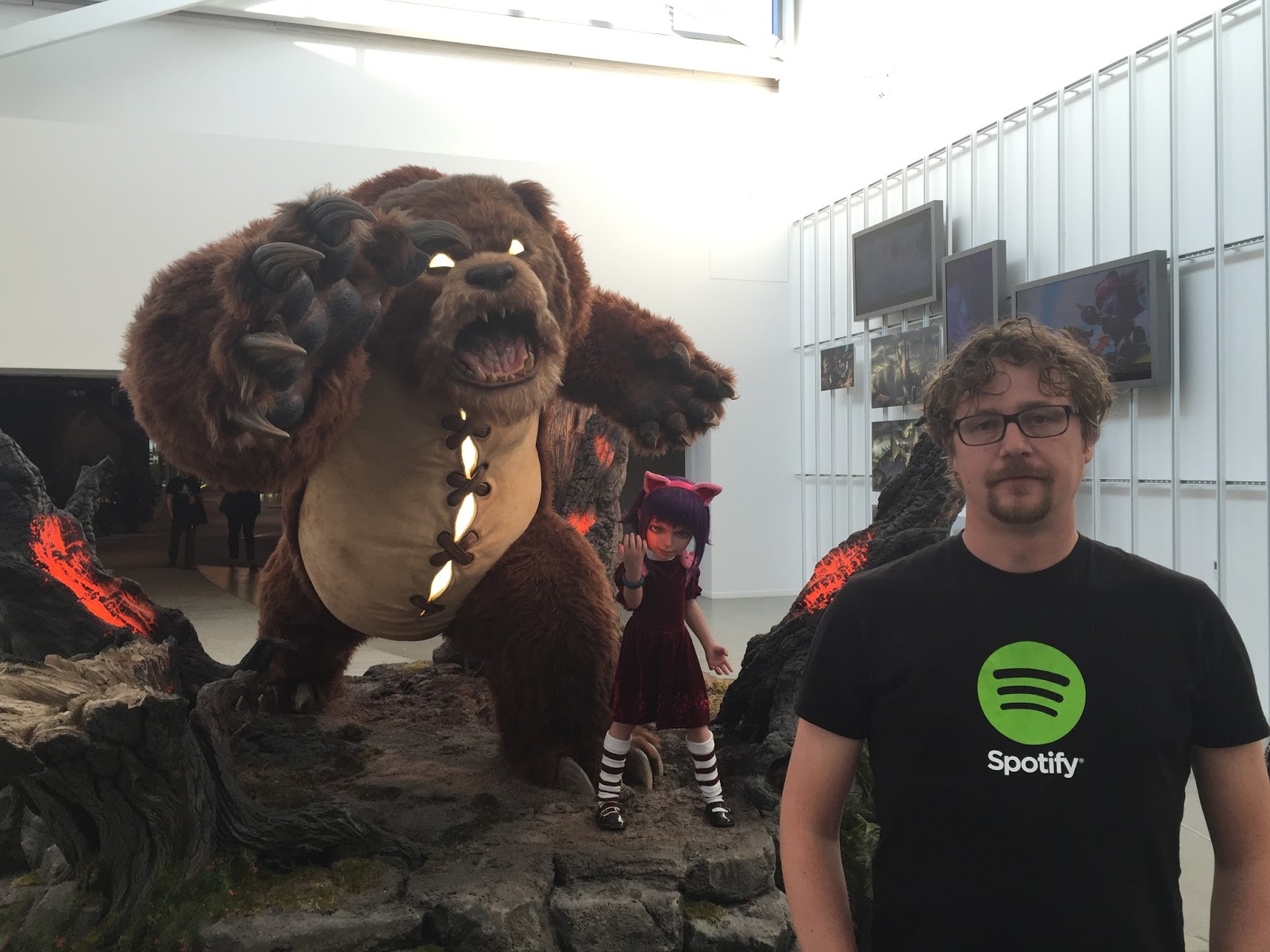
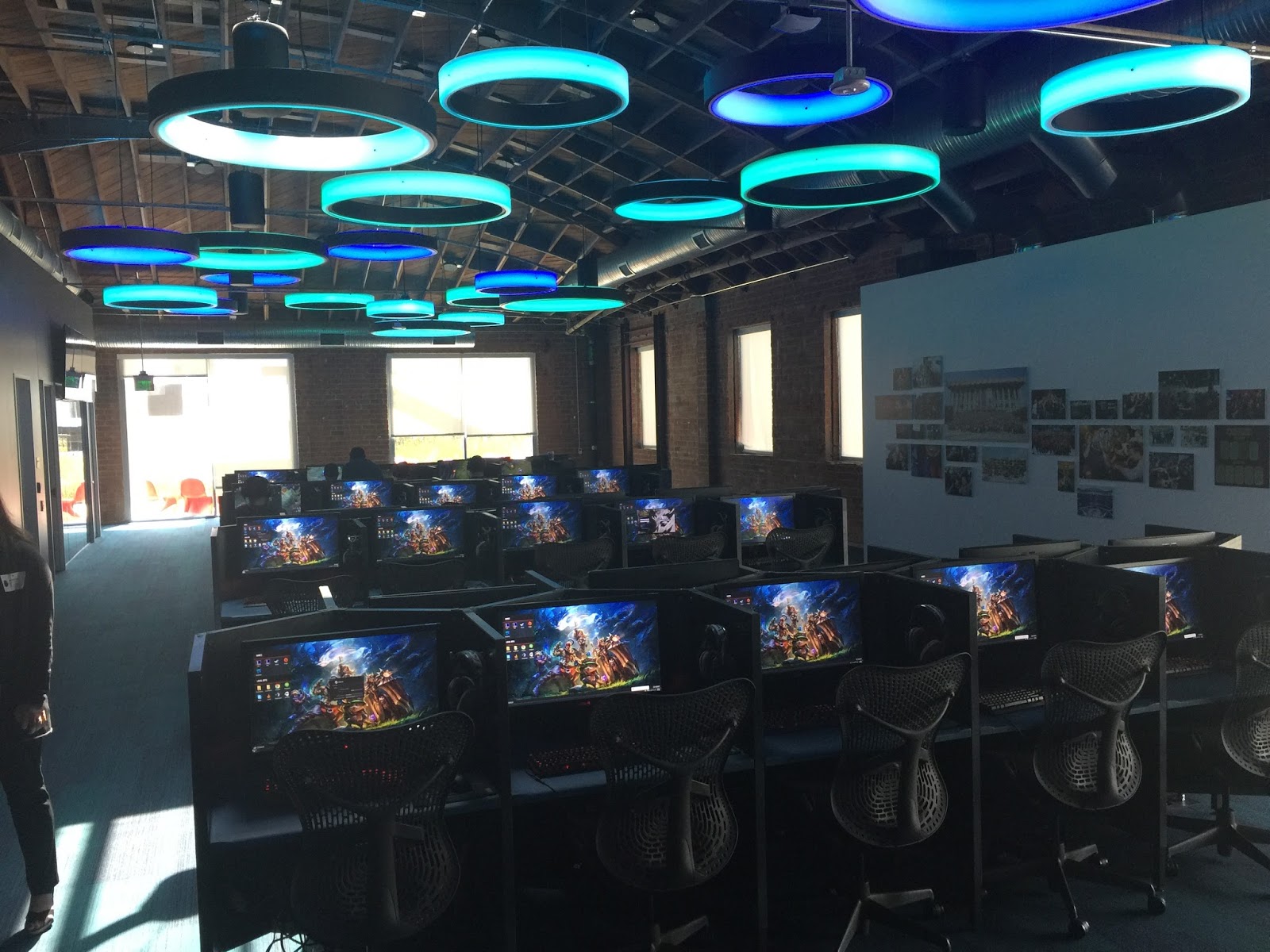
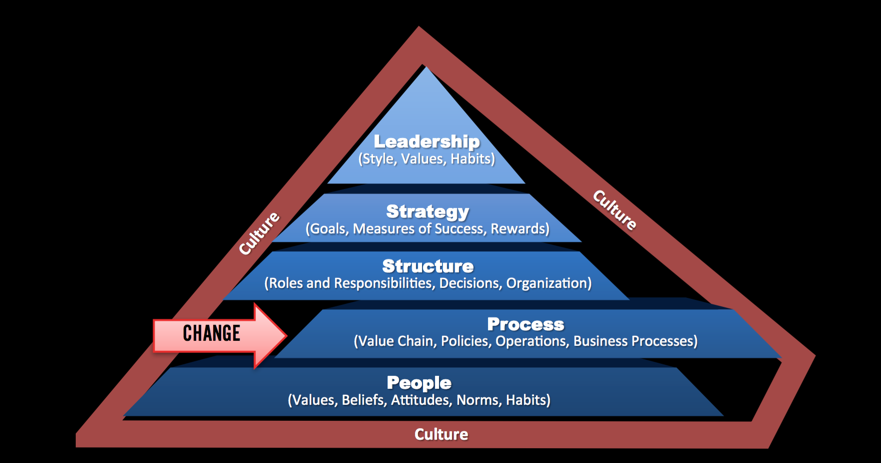

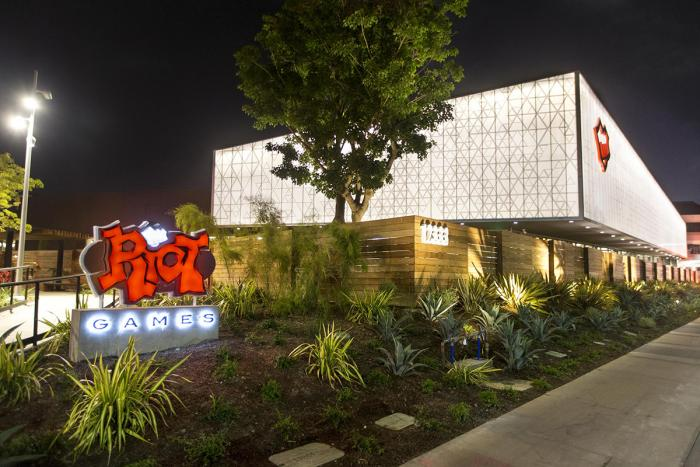
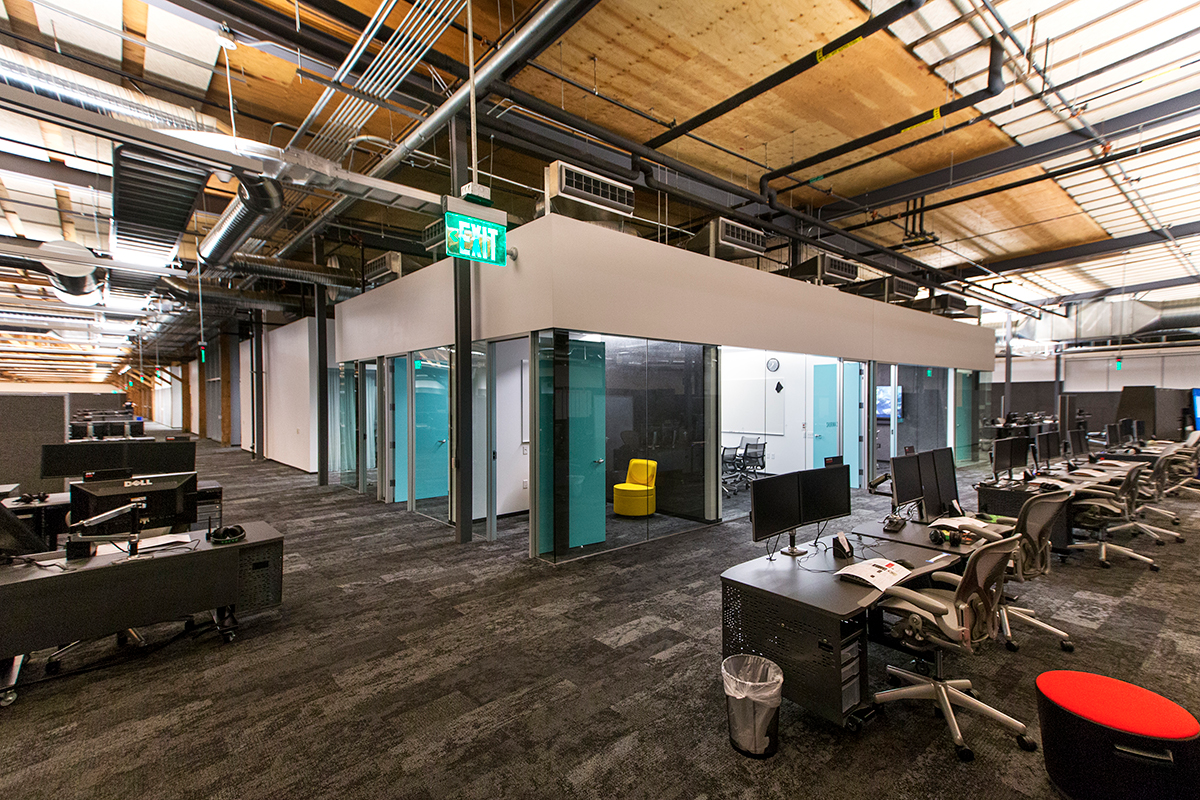
[…] complexities and plenty of room to grow. While enterprise companies like Barclays, Ericcson, and Riot Games may set the tone, SMBs will quickly be able to outpace them in business Agile […]